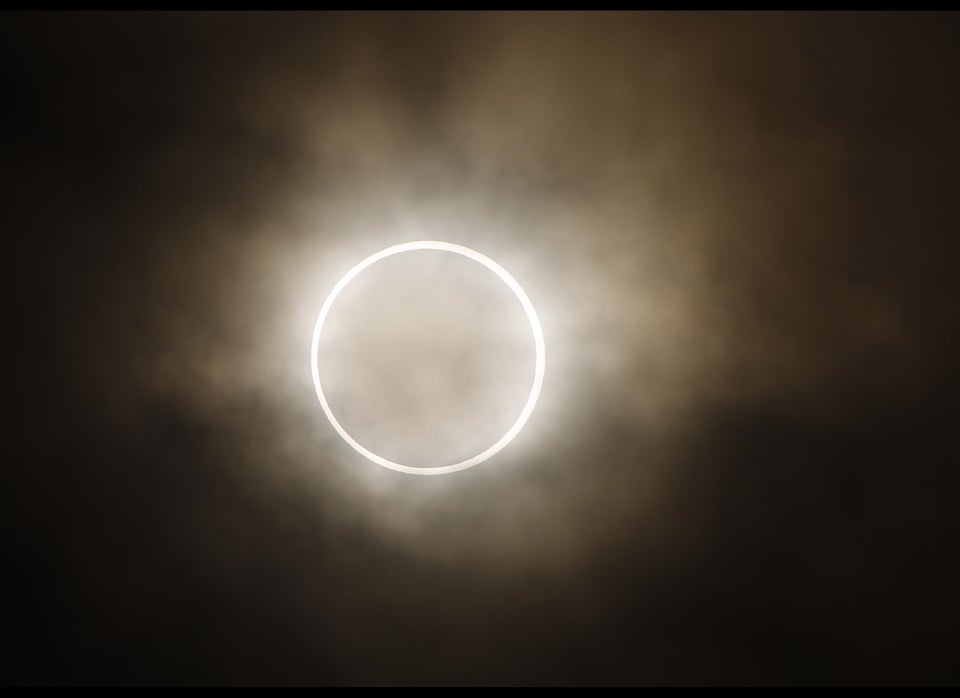On Sunday, a rare annular solar eclipse will be visible in parts of Asia, the Pacific and the western U.S.
It's the first annular solar eclipse visible in the U.S. in nearly 18 years, according to NASA, and it will be more than 10 years before another annular solar eclipse is visible in the mainland U.S., National Geographic reports.
Story continues below.
The eclipse will first be visible in southern China at 6:36 p.m. EDT, according to Space.com. It will continue on its path of annularity over Hong Kong and parts of Japan and crossing the Pacific Ocean. It will first become visible in Oregon and northern California at around 8:05 p.m. EDT, but won't reach the maximum coverage until about 80 minutes later. (Click here for more about how and when to view the eclipse.)
Unlike a total eclipse, which occurs when the moon passes directly in front of the Sun to block out the entire star, an annular eclipse covers only part of the Sun, producing what looks like a giant "ring of fire." Those lucky skywatchers inside the 8,500-mile long and 186-mile wide "path of annularity" will see the ring phenomenon for roughly five minutes, according to the Associated Press. People in the United States who are west of the Mississippi River but outside of the path of annularity will still see a partial eclipse.
Attempting to look at the eclipse with the naked eye, sunglasses or an optical device, like a telescope or binoculars, can result in permanent eye damage, so visit The Exploratorium's website for tips about how to safely view the astronomical phenomenon.
RECAP OF LIVE UPDATES:
